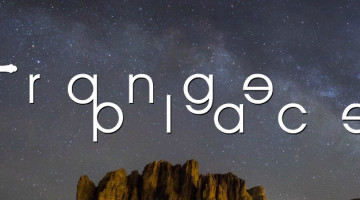
For the time being web series are attempting to survive through a traditional ad supported model but the niche nature of the content is likely to change that. Can web based programming thrive under a paid model? A handful of startups think so.
Ad supported content has seemingly been the basis of virtually every original web based business model since the invention of the internet by Al Gore some time before the 2000 election. Unfortunately for creators, somewhere along the line people got the idea that everything on the internet was supposed to be free. I would chalk this up to the newness of the medium, and people’s inherent hesitance to trust giving out credit card information over the net.
The ad based model is about making incremental revenue off of every single user. In order to succeed it requires a large user base. As we saw with the dot com bust early this century, sites that were incapable of getting users to dole out real cash for services were unable to survive. This model works for sites like youtube and facebook which are platforms driving massive amounts of user generated (free) content. These companies are looking to convert each average user into a few dollars of ad revenue per year – and think of the amount of time people spend on these sites. This works for large broadcast networks like NBC, and CBS – for which there are only a handful nationwide. For shows on these networks budgets are typically in the $50,000 to $100,000 range – per minute.
While even very popular sites, with plenty of users, like the New York Times and the Wall Street Journal – two sites focused on professionally created content have been forced to put up paywalls to turn ad supported customers into paying customers – who also still view ads. This is similar to cable tv in that people pay to access it and yet they still view ads. In the cable model, it is vital for channels to get on the basic subscription tier in order to ensure that there are enough eyeballs to support the channel through advertisements.
The ad model focuses on maximizing viewers (ad views) and limiting cost. Television networks have to work within the constraint of timeslots and showing one thing at a time, where as a site like youtube offers a virtually unlimited amount of available programming at all times of the day. This means that there are fewer shows created for television, and in turn these shows receive a much larger viewing audience. A television network can spread its budget across a handful of shows, knowing that they can only offer one thing at a time. Youtube on the other hand has to divide its advertising revenues among all of its videos.
Subscription models, on the other hand, are about turning a percentage of customers / potential customers into significant revenue drivers. As time has gone on people have become more willing to entrust sites with their credit card information – even if it has been shown not to be the best idea.
 The best examples of this are HBO and Netflix. These are similar to being premium versions of broadcast networks and youtube. HBO divides its budget among a handful of shows where as Netflix has an immense catalogue of shows and movies available for roughly the same cost per month. Up until recently, Netflix was simply a secondary revenue stream for the shows available on the platform as it alone is not capable of providing the revenue per show that a channel like HBO can – at least not without dramatically increasing its prices
The best examples of this are HBO and Netflix. These are similar to being premium versions of broadcast networks and youtube. HBO divides its budget among a handful of shows where as Netflix has an immense catalogue of shows and movies available for roughly the same cost per month. Up until recently, Netflix was simply a secondary revenue stream for the shows available on the platform as it alone is not capable of providing the revenue per show that a channel like HBO can – at least not without dramatically increasing its prices
The noticeable trend is that as content becomes more niche it moves from an ad model to an increasingly premium model. As time moves forward, the internet seems to show us that the only sites capable of surviving off of an ad model are platforms for content created either very cheaply, without expectation of financial return, or under unrealistic expectations. This is likely because the internet has become an inherently niche medium – with virtually infinite availability.
 New site JTS.tv – Just The Story TV – has created a platform for previously established web series to be peddled to fans for a small monthly fee. They seem to understand the fallibility of an ad based system and are banking on a cable style ‘strength in numbers’ programming method. Web series are an insanely niche market right now, and they are being swamped with new offerings by many producers not entirely interested in financial return. This market likely has far too much competition for shows to survive off of ads alone, but there may be enough hardcore fans willing to dole out real money to watch specific shows.
New site JTS.tv – Just The Story TV – has created a platform for previously established web series to be peddled to fans for a small monthly fee. They seem to understand the fallibility of an ad based system and are banking on a cable style ‘strength in numbers’ programming method. Web series are an insanely niche market right now, and they are being swamped with new offerings by many producers not entirely interested in financial return. This market likely has far too much competition for shows to survive off of ads alone, but there may be enough hardcore fans willing to dole out real money to watch specific shows.
 JTS is not the only site charging viewers real money to watch web series. Another online network, tello films, has embraced an underserved niche market and put their content behind a paywall. The channel looks for partners in content creation and shares revenue with them. So far the model has been profitable – something I doubt would be possible under an ad based model.
JTS is not the only site charging viewers real money to watch web series. Another online network, tello films, has embraced an underserved niche market and put their content behind a paywall. The channel looks for partners in content creation and shares revenue with them. So far the model has been profitable – something I doubt would be possible under an ad based model.
In most cases it is not going to be about the amount of viewers you can get but rather how much money you can get out of each viewer. The real question for JTS.tv, tello films and other web series creators is whether or not they can provide enough quality to get people to pay money to watch. Looking at HBO and Netflix as examples they are at a huge disadvantage from a price / quality standpoint but that may not matter if web series creators can find the sweet spot for production quality and cost. Producing content cheaply is vital (watchmojo content is produced for roughly $100 per minute) but ultimately creating something unique and providing content that is unavailable anywhere else might be the real key.










No Comment